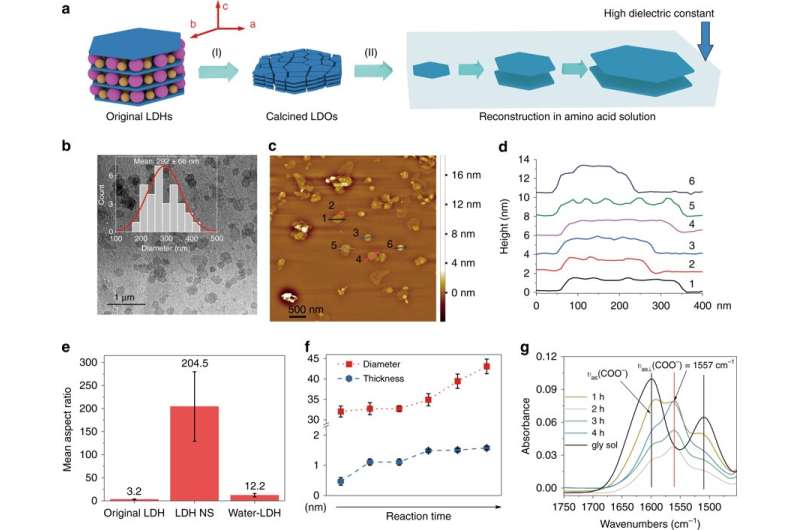June 13, 2019 report
New nanosheet coating could replace nonrecyclable metalized films in food packaging

A team of researchers at the University of Oxford, in the U.K., has developed a new type of nanosheet coating for food packaging that could replace the metalized films currently in use. In their paper published in the journal Nature Communications, the group describes their process and hopes that their product might make a whole class of food packing more recyclable.
The shiny silver coating often used to keep packaged foods fresh is most often seen on the insides of bags of potato chips and candy bars. What many people may not realize is that the familiar silver coating makes such packaging very difficult to recycle because the metal film must be removed from the plastic, which means most of it winds up in a landfill. In this new effort, the researchers have come up with a replacement for the metalized films that are fully and easily recyclable.
The new film was made using an inexpensive process that produces thin films made from water and amino acids. More specifically, they were made by first creating a nanosheet of non-toxic synthetic clays. The nanosheet was then stabilized using amino acids. The resultant films are transparent, and most importantly, do not allow gases or water vapor to pass through. In practice, the films would be applied to a plastic, such as those already used in packaging, such as polyethylene terephthalate—the same kind of plastic also used in water bottles. The researchers have already tested the film by exposing it to several gases currently in use in food packing and found it to be approximately 50 percent less permeable. They also put it through physical abuse tests to make sure it could stand up to the processes that packaged foods must endure. They report that it withstood such abuse as well as the metalized films currently in use.
The researchers note that because the films are synthetic, their final makeup is in the control of companies that use it as a packing replacement. But they also acknowledge much more testing will need to be done with the films before companies would be willing to switch over to using it instead of the more familiar metalized films.
More information: Jingfang Yu et al. High gas barrier coating using non-toxic nanosheet dispersions for flexible food packaging film, Nature Communications (2019). DOI: 10.1038/s41467-019-10362-2
Journal information: Nature Communications
© 2019 Science X Network



















